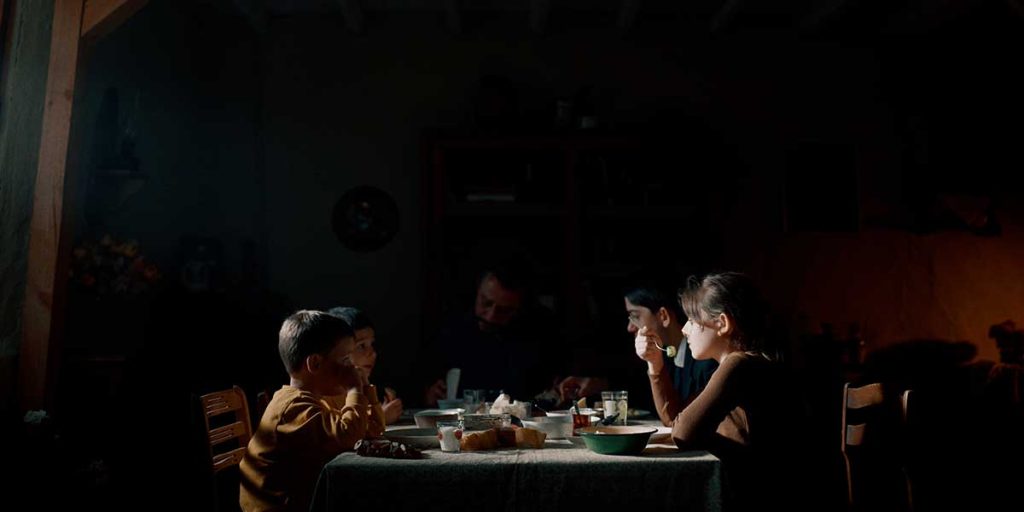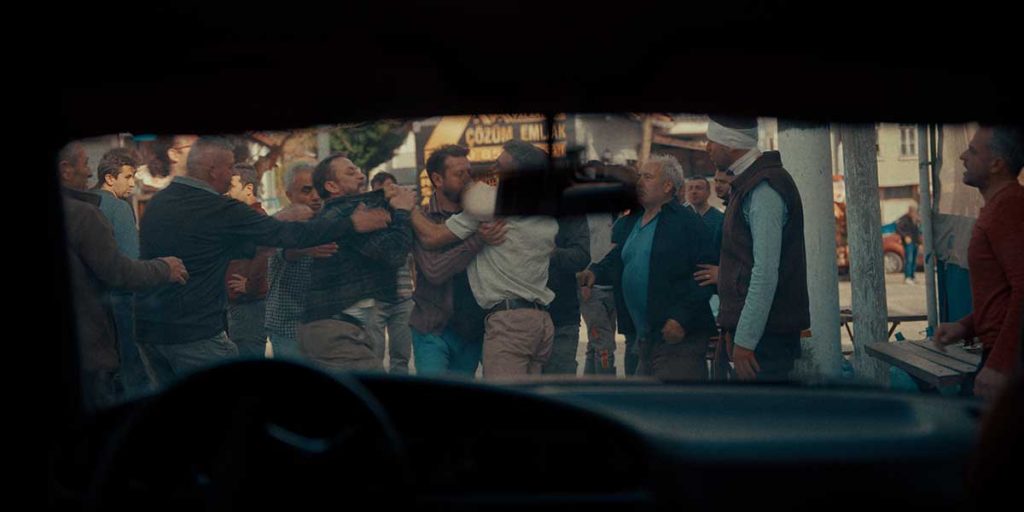
As We Breathe follows Esma and her father, residents of a small Turkish town, as they navigate life after a chemical fire devastates their village. At first glance, it seems the disaster has simply forced the townspeople to adjust their routines but the longer they stay, the more unsettling truths emerge. Esma begins to notice unexplained health issues, animals behaving strangely, and neighbors quietly leaving without explanation. While her father insists on maintaining normalcy and holding on to their home, Esma grows increasingly suspicious that the aftermath of the fire is far more dangerous than anyone is willing to admit. Their relationship is tested as Esma pushes for answers and her father struggles to protect what remains of their life
The film is a profoundly cinematic experience, where the cinematography does not just capture events it shapes the story. Every angle, frame, and composition, paired with clever, precise editing, amplifies the emotional weight of even small actions. The place and surroundings feel like a character themselves: the home, the car, the market, the streets they bear witness to the rhythms of life, the cycles of hardship, and the subtle evolutions of each day. The recurring visual cycles—breakfast, car, market, car back, home divide the movie into hidden chapters, each repetition updating us on aftermaths, emotional shifts, and consequences, making the ordinary deeply significant. This paired visual-and-situational narration is evidence of a director with a clear, thoughtful vision. The camera’s movement flowing through windshields, following the family in intimate spaces, capturing life both up close and at a distance—draws us into their world with effortless immersion. Wide shots, carefully chosen colors, and subtle sound design turn silence and pauses into narrative instruments, allowing tension, intimacy, and emotion to breathe.

At the heart of this cinematic web are the performances. The father’s acting is raw, stripped, exposing the exhaustion of someone living on autopilot, bearing the weight of both circumstance and responsibility. Every gesture, look, and pause communicates his internal struggle. The child actress is nothing short of brilliant; her presence is luminous, capturing innocence, curiosity, and resilience in a way that immediately connects the audience to the family’s small joys and struggles. Altun’s direction ensures that, intimate ordinary moments such as kids playing on the couch or the simple act of riding in the car feel real without overt signal or dramatization that humanize the story amid its environmental and social pressures.
Silence in this film is as powerful as sound. The quiet moments between actions, the pauses, the ambient noise of wind, footsteps, or a moving car all create a rhythm that mirrors the cyclical structure of the narrative. Repetition is not redundancy; it is meditation, a visual and emotional echo that deepens understanding of character and context. Scenes of children playing, family breakfasts, and car rides act as anchors, grounding viewers in the everyday while subtly reminding us of the undercurrents of anxiety, fear, and limitation.
As We Breathe is multilayered. On one level, it examines father-daughter dynamics and the human desire for attention and fairness, even under duress. On another, it is rich with symbolism: the fire, the constrained domestic space, and the repeated visual cycles evoke a “world within a world,” where life carries on externally while the family’s inner world is quietly consumed. It’s a meditation on endurance, invisibility, and the weight of environmental, societal, and personal constraints. Altun asks us to witness, to inhabit the rhythm of life under pressure, and to see how small, subtle moments carry immense significance.

While its slow pace, abstract narrative, and contemplative style make it a niche work, As We Breathe has been well-received in film festivals, especially for its cinematography, performances, and visual storytelling. Its commercial reception may be limited due to its deliberate pacing and subtlety, but for audiences attuned to cinema that rewards attention and reflection, it offers a rich, immersive experience. The layering of narrative cycles, paired with smart editing and evocative visuals, ensures that the film lingers long after the credits roll.
This is a film where cinematography, editing, performance, and environment converge to tell a story far beyond dialogue or plot summary. As We Breathe is not just a watched films, it is felt, absorbed, and remembered.
